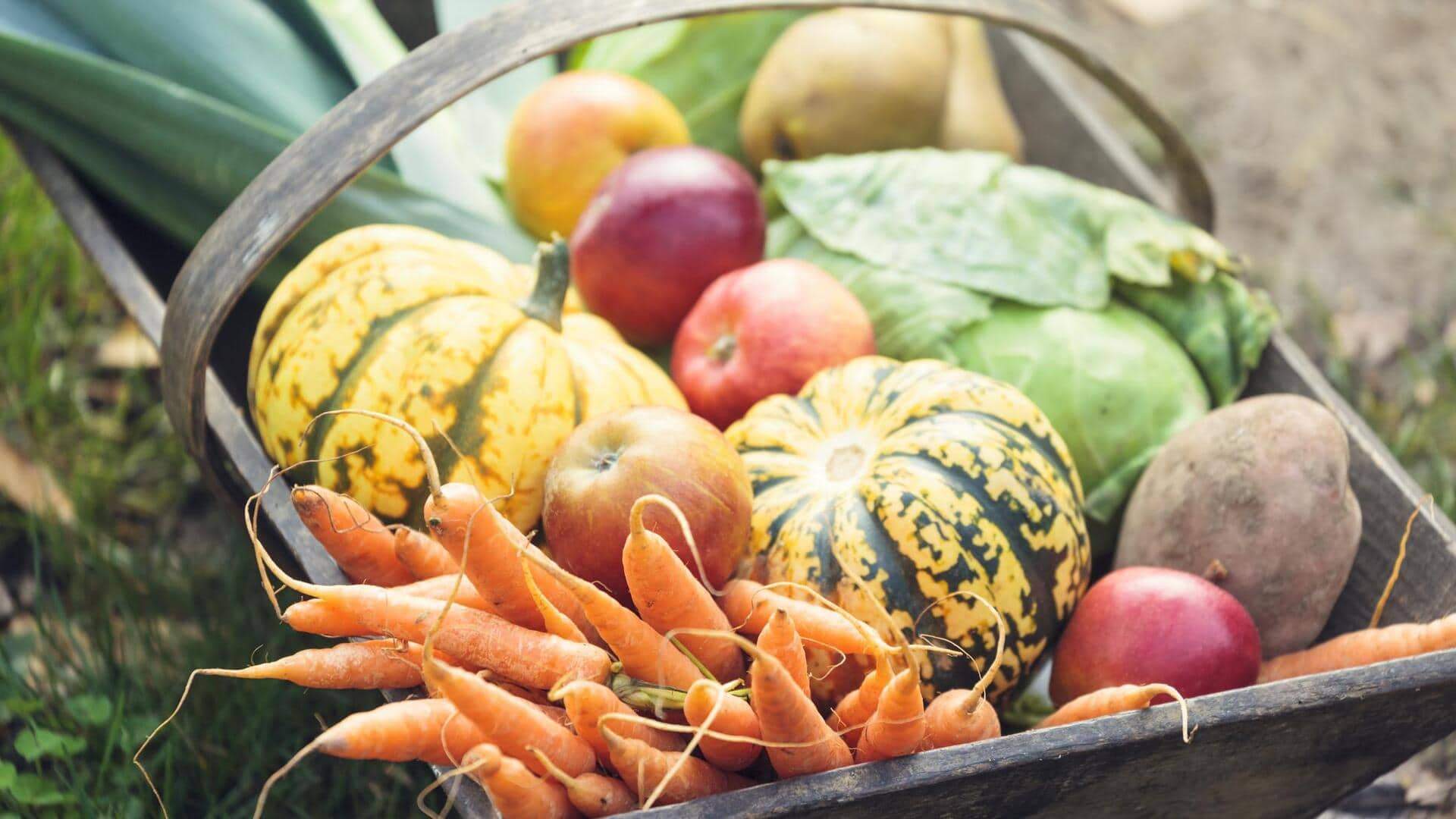
How to add seasonal produce to your diet
What's the story
Incorporating seasonal produce into your meals is a simple yet effective way to boost your nutrition. Seasonal fruits and vegetables are often fresher, tastier, and more nutrient-dense than their out-of-season counterparts. They also tend to be cheaper, as they are in abundance during their peak harvest times. By choosing seasonal options, you can enjoy a variety of flavors while supporting local farmers and reducing your carbon footprint.
#1
Benefits of eating seasonal fruits
Eating seasonal fruits has a number of benefits, the most important being their higher nutrient content. Fruits that are in season are harvested at their peak ripeness, which means they are packed with vitamins and minerals. For example, berries in summer are loaded with antioxidants that promote good health. Plus, seasonal fruits are usually cheaper than imported ones, making them a budget-friendly option for nutritious eating.
#2
Seasonal vegetables for optimal health
Just like fruits, vegetables also offer a range of health benefits when eaten in season. Root vegetables like carrots and beets are perfect for winter months when they are harvested. These vegetables are rich in fiber and essential nutrients such as potassium and vitamin C. Eating these vegetables can help boost your immune system during colder months.
Tip 1
Tips for choosing local produce
When shopping for local produce, visit farmers' markets or join community-supported agriculture (CSA) programs. These options provide access to freshly picked items directly from local farms. Look for signs indicating whether the produce is organic or sustainably grown if that aligns with your preferences. Speaking directly with farmers can give you valuable insights into how the produce was grown and harvested.
Tip 2
Incorporating herbs into your meals
Herbs like basil, cilantro, and parsley can elevate the taste of your dishes while providing health benefits such as aiding digestion and reducing inflammation. Growing herbs at home or buying them locally ensures you get the freshest options possible. Add these herbs to salads, soups, or as garnishes on main dishes to enhance flavor without adding extra calories or sodium.